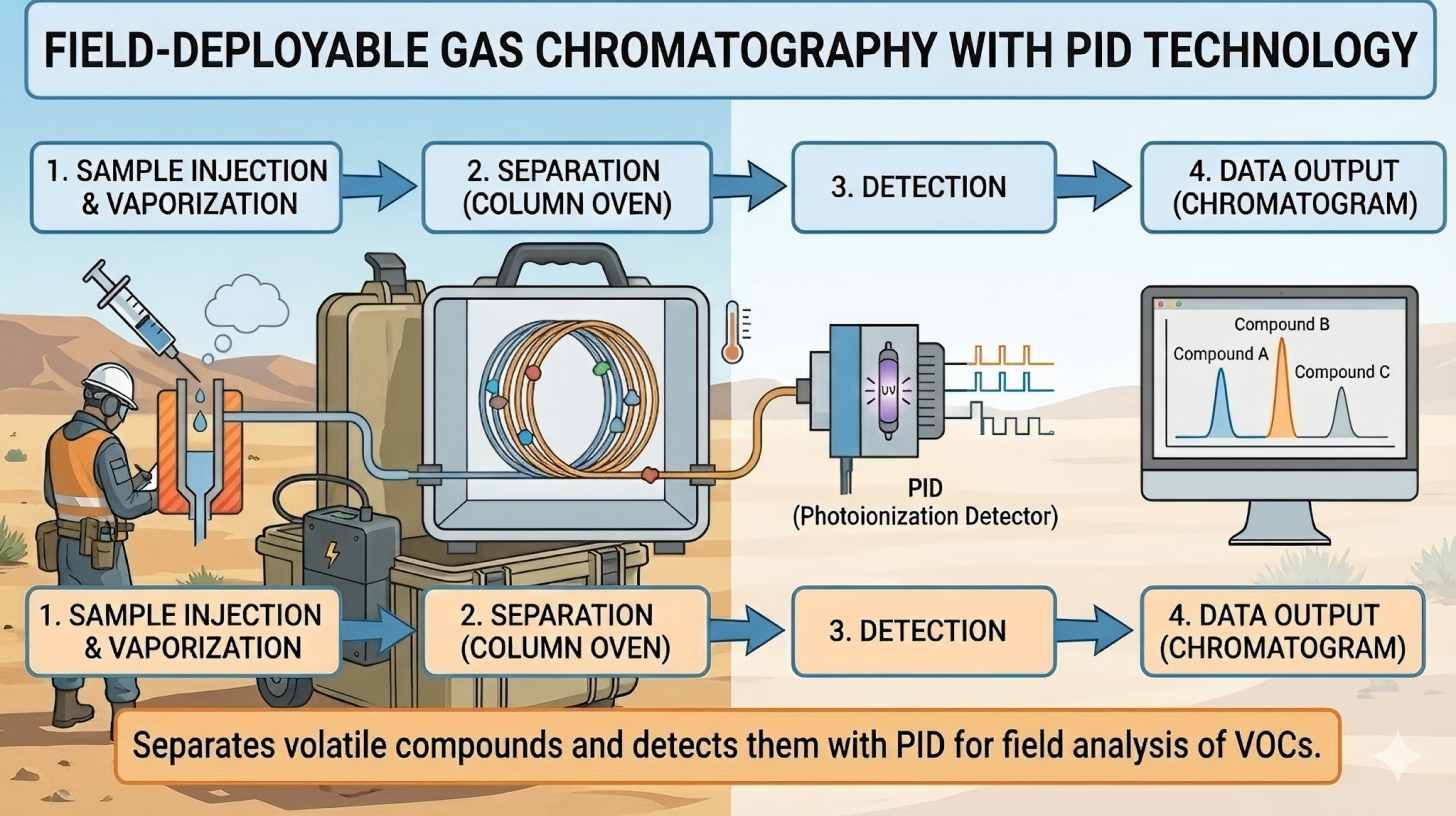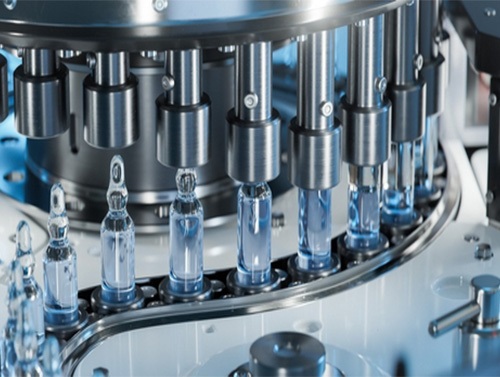
Gas Chromatography
Gas Chromatography (GC) is a high-precision analytical technology used to separate, identify and quantify volatile and semi-volatile chemical compounds. A sample is vaporized and carried through a chromatographic column by an inert gas, allowing each compound to be separated based on its chemical interactions. GC provides laboratory-grade accuracy and plays an important role in hazardous chemical detection, environmental monitoring, industrial quality assurance and emergency response.
Technology Features
High-Resolution Separation of Chemical Components
Precise Component Differentiation:
Gas Chromatography provides exceptional separation accuracy for complex chemical mixtures. Each compound produces a unique retention profile as it passes through the chromatographic column, allowing GC to distinguish substances even when present in multi-component or trace-level samples.
Enhanced Analytical Specificity:
By pairing GC with detectors such as PID or mass spectrometry, the system achieves highly selective analysis of volatile and semi-volatile compounds. This enables clear identification of hazardous chemicals, pollutants and industrial compounds with laboratory-grade precision.

Quantitative and Trace-Level Detection Capability
Accurate Concentration Measurement:
GC delivers highly reliable quantitative data, allowing precise measurement of chemical concentrations across a wide dynamic range. Its stable baseline, linear response and robust calibration make it suitable for both routine analysis and trace-level monitoring.
Sensitive Detection of Low-Concentration Compounds:
With strong signal-to-noise performance, GC is capable of detecting low-level toxic industrial chemicals, environmental contaminants and hazardous gases. This sensitivity supports applications that require early-warning detection and high confidence in analytical results.

Flexible Deployment Across Multiple Platforms
Adaptable System Integration:
Gas Chromatography supports modular deployment and can be integrated into benchtop analyzers, portable instruments, vehicle-mounted laboratories and mobile emergency response units. Its flexibility enables GC to serve both fixed and field-based detection needs.
Compatibility with Advanced Analysis Technologies:
GC can incorporate AI-based peak recognition and compound-matching algorithms to accelerate interpretation and reduce operator workload. It also integrates seamlessly with HT-Nova’s multisensor platforms, including IMS, Raman, fluorescence and electrochemical modules, to create comprehensive multi-threat detection systems.


















